MARIANI’SVirtual
Gourmet
December 23,
2012
NEWSLETTER

THIS WEEK
PARISIAN HOLIDAY
by John Mariani
NEW YORK CORNER
Atrio
by John
Mariani
NOTES FROM THE WINE CELLAR
CHÂTEAU
ANGELUS
by
Mark Golodetz
by John Mariani
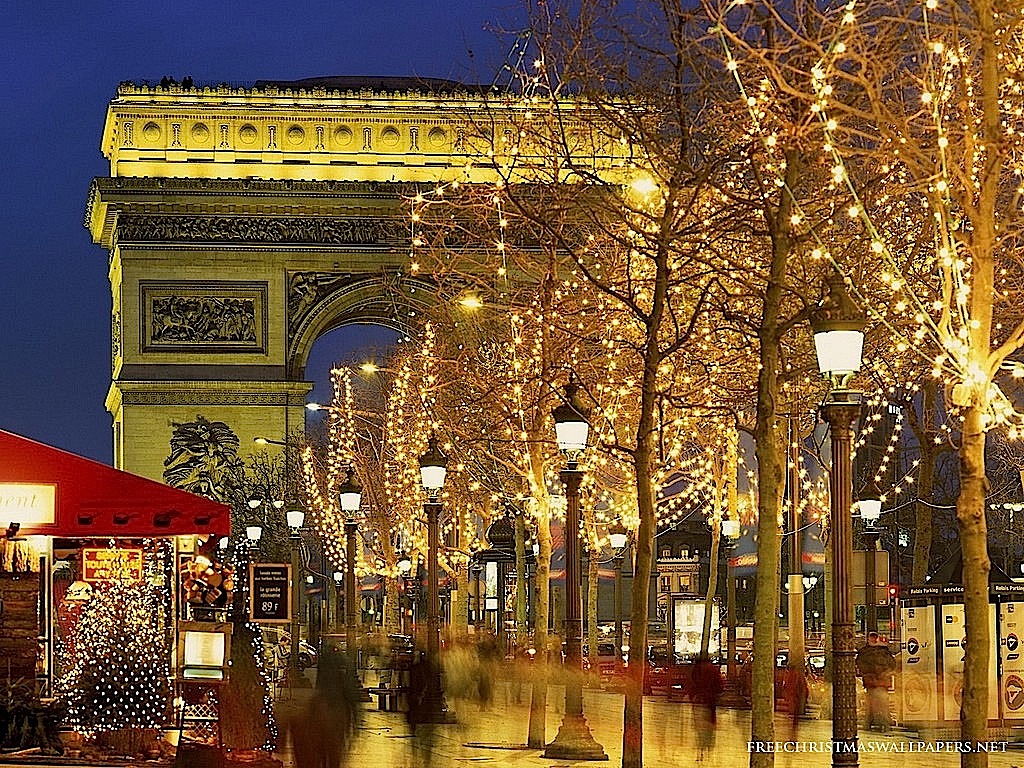
STAYING PUT IN PARIS
CENTRAL
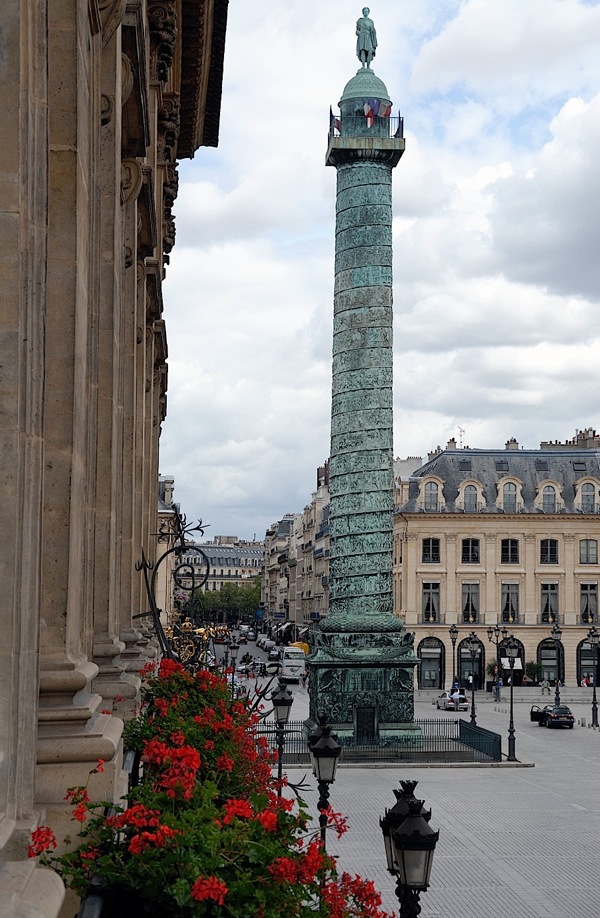 HOTEL DE
VENDÔME
HOTEL DE
VENDÔME
1 Place Vendôme
+33 (0)1 5504 5500
hoteldevendome.com
Opened just three years ago, the hotel has 29 very quiet rooms, each with a wonderful view of the streets of the First Arrondissement, just off the Place itself, close to the Rue Faubourg-St. Honoré, and a stone's throw from the Louvre. The building was once a private mansion of the Vendôme family, built in 1723 and converted into a hotel in 1907. Single and doubles rooms have queen size beds, deluxe doubles have king or twin beds, a junior suite a dressing room and sitting room, a deluxe suite has a separate living room and one and a half baths--all done in the Empire style of décor, while the extravagant
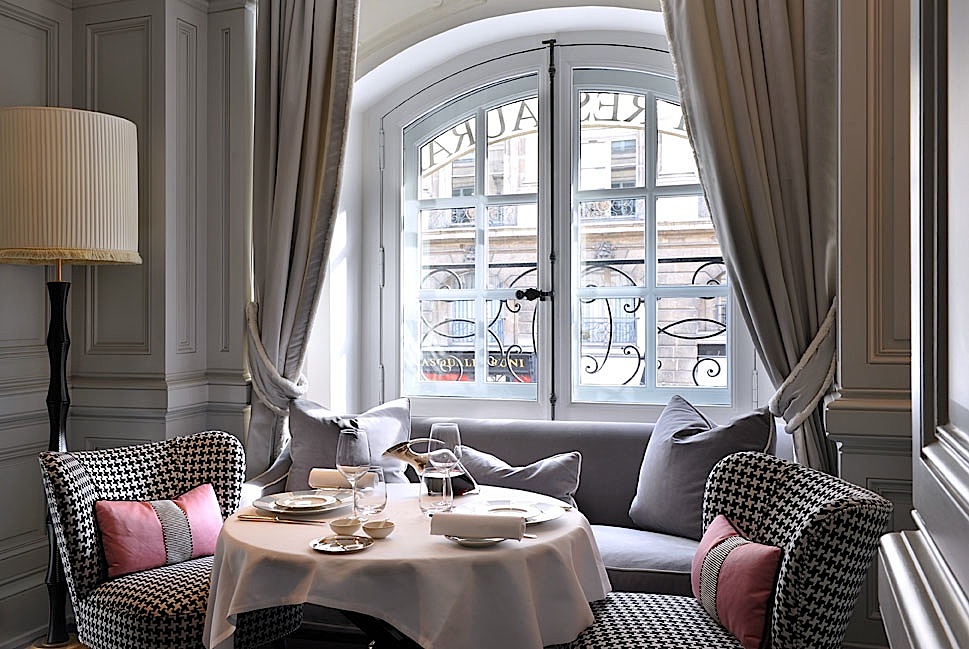 Presidential
Suite is on the top floor, done in Art
Déco. The photo at the left is taken from a
balcony room. I love the amenities here, including good
closet space and a set of stationery and utensils
in a leather case at your desk.
Presidential
Suite is on the top floor, done in Art
Déco. The photo at the left is taken from a
balcony room. I love the amenities here, including good
closet space and a set of stationery and utensils
in a leather case at your desk. I also like the idea that, if you arrive overnight, you can erase your jetlag by dropping your bags here, strolling the Place Vendôme, and having a light lunch, then flopping into the big soft beds for a nap, the shutters and curtains stifling the noise outside. The dining room here overlooks the Place Vendôme from the first floor (right), and in the afternoon the hotel offers a unique afternoon Coffee Time, with desserts and ice creams, as well as sweets from La Chocolaterie de l'Opera, from 3 PM-7 PM.
FOR THE BIG SPLURGE
 Plaza-Athenée Hotel
Plaza-Athenée Hotel25 Avenue Montaigne
+33 (0)1 53 67 64 00
plaza-athenee-paris.com
Long
one of the most beautiful and glamorous of Paris’s
“grand châteaux” hotels is the Plaza-Athenée,
with two Alain Ducasse-run restaurants. For the
holidays the hotel is offering both a Romantic
package with Deluxe Room, Champagne and
chocolates, access to the Sauna & Hamman at
the Dior Spa, and breakfast, from 950 euros. Also a
Family Package of two connecting rooms, children’s
breakfast and gifts, cookies upon arrival, and
access to the hotel’s own Christmas ice rink, from
1,450 euros.
The room options at the hotel
range from a Standard Guestroom to Deluxe Junior
Suites to Prestige Suite to Presidential Suite to
Royal Suite and an Eiffel Tower rooftop duplex,
every one sumptuously decorated in a style that
bespeaks true Parisian luxury, with bright marble
bathrooms, flowers everywhere, and service that is
never intrusive. You are greeted in the
lobby by a check-in and concierge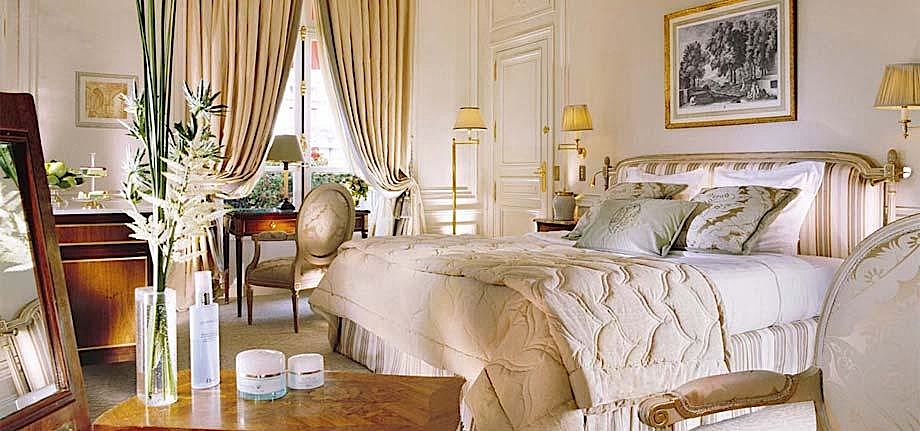 staff
that speaks several languages, and you have the
option of dining at Alain Ducasse's namesake
three-star dining salon here for dinner or at the
charming, ever ebullient Le Relais, where I had my
last meal on a trip last month to France.
staff
that speaks several languages, and you have the
option of dining at Alain Ducasse's namesake
three-star dining salon here for dinner or at the
charming, ever ebullient Le Relais, where I had my
last meal on a trip last month to France.
Dining alone, on occasion, is
one of my favorite pastimes, and at Le Relais, the
service staff, from maître d' Werner
Küchler to waiter, demonstrates a bonhomie
you will not always find in the higher altitudes
of hotels in the city, especially on Sunday night,
when most Paris restaurants are closed. Yet
on the Sunday I dined there Le Relais was jammed
with hotel guests, people celebrating a birthday
or a romantic anniversary, as well as foreign
business people like the Japanese woman whom I
treated to what was apparently her first glass of
Champagne, which had precisely the effect on her
that Champagne should have, which was to make her
giddily happy in a way she had not heretofore
quite experienced.
The room has a sleek Art
déco look that memorializes that of the
French oceanliner La Normandie (burned and
scuttled in New York harbor during the war).
As the staff presented little puff pastries to
nibble on, I looked over the menu, which is
classic French, with many bistro items along with
imaginative dishes by Ducasse-appointed Chef
Philippe Marc.
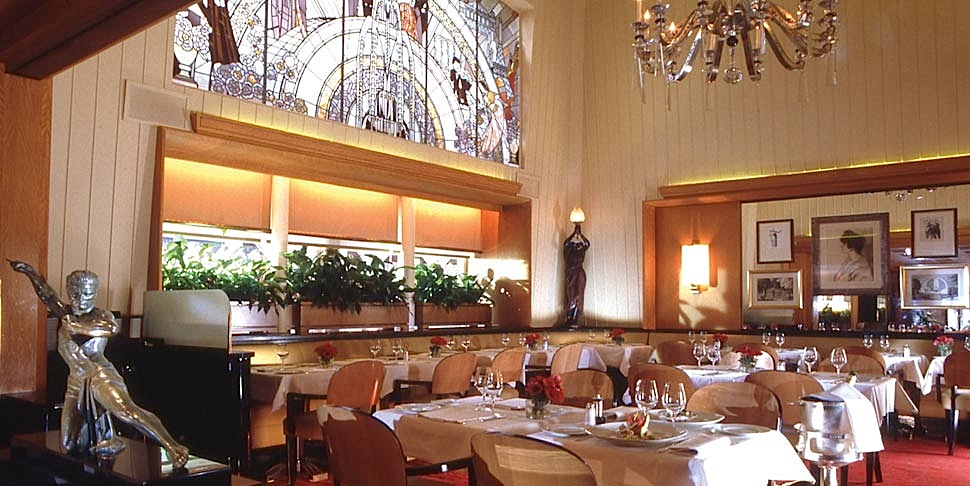 I
began the evening with plump grilled scallops
with wilted leeks and ground black truffle, each
ingredient enhancing the others, and it was all
I could do not to order the duck foie gras, one
of the best renderings in Paris, served
with poached figs in Sangria, with toasted
brioche.
I
began the evening with plump grilled scallops
with wilted leeks and ground black truffle, each
ingredient enhancing the others, and it was all
I could do not to order the duck foie gras, one
of the best renderings in Paris, served
with poached figs in Sangria, with toasted
brioche.
My main course, which I
ordered with a generous green salad, was sole
meunière, gently sautéed in rich
butter, served with a ramekin of frothy
butter, buttered spinach and what seemed
butter-with-whipped potatoes rather than
potatoes-with-whipped butter. It was
extravagant and utterly delicious in a way that
proves the French may wink at other fats in
their diet but will always be true to butter.
For dessert Le Relais' signature millefeuille
had a fragility of pastry and wonderment of
cream that necessitated my finishing every
morsel.
Prices are certainly not
cheap at Le Relais, though far less so than in
the Ducasse dining room, and offers a quite
reasonable 3-course menu at 46 Euros and another
at 54. At Saturday and Sunday lunch, they
offer the "Menu for the Tribe," a 60 euro meal
(needing to be booked 48 hours in advance) for
"family and friends" at which the chef and staff
will choose a menu for you according to your
wishes, including what is special that day for a
table of between six and twelve.
"Swinging Relais" is a jazz
band evening held every last Wednesday of the
month with a 75 euro à la carte menu.
I truly love the conviviality
and style of Le Relais, which manages to balance
the glamor of a meal in this shining space
without the hauteur, and it is a fine way
to spend your first, last, or any evening in
Paris.
A MOST CIVILIZED
BAR
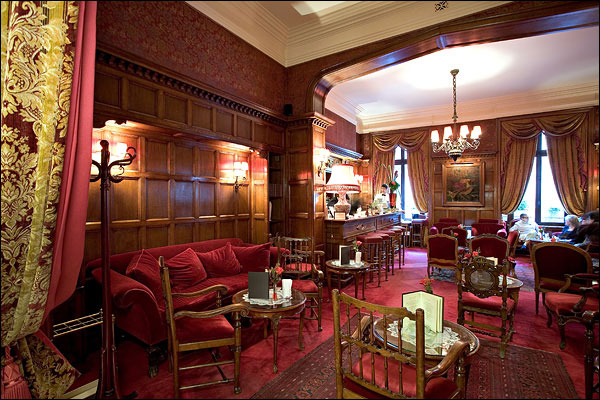 BAR ANGLAIS
BAR ANGLAIS
Hôtel Raphael
17 Avenue Kléber
+33 (0)1 53 64 32 00
raphael-hotel.com
Since the iconic Hemingway Bar at the
Ritz is now closed for the hotel’s two-year rehab,
the intimate Bar Anglais at the Hôtel
Raphael near the Arc de Triomphe and Champs
Élysée (the Metro Station is steps
away) has become an oasis of cool 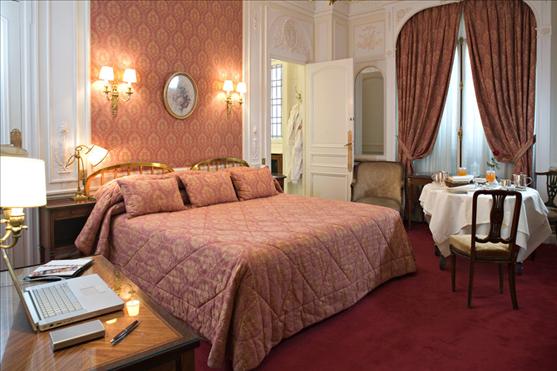 chic and classic French
style, with bartenders who really care about
everything that goes into their cocktails. It’s a
place other
Parisian bartenders come to drink.
chic and classic French
style, with bartenders who really care about
everything that goes into their cocktails. It’s a
place other
Parisian bartenders come to drink.
The
Hôtel Raphael, under the ownership of the
Baverez family for four generations, has a
consistency only that kind of longlived
proprietorship can maintain. People return
here because they feel welcomed back, comforted,
at ease. Discretion rules. With 38
suites and 52 rooms, it is a moderately sized,
with wonderful intimacy, large rooms, and
particularly commodious bathrooms. There is a
fitness room and fine restaurant here, having now
acquired a
new chef, 32-year-old Amandine Chaignet, last
sous-chef at the Crillon. too.
A POP-UP IN PARIS
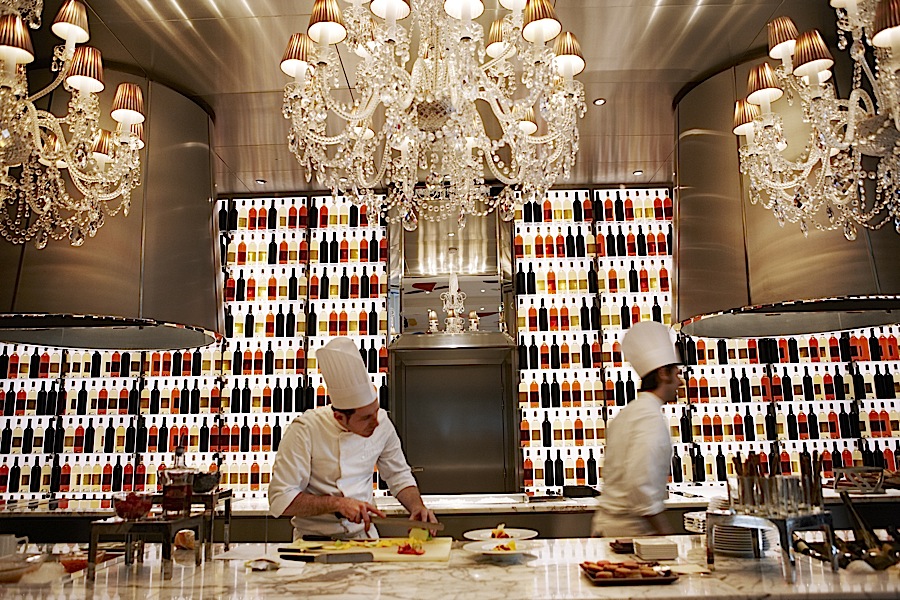 Nobu
Nobu
Le Royal Monceau Raffles
37 Avenue Hoche
+33 1 42 99 8800
leroyalmonceau.com
Oddly
enough, the biggest buzz on the dining scene in
Paris right now is the three-month pop-up of a
Nobu restaurant taking over La Cuisine at Le Royal Monceau Raffles Hotel. All
Nobu Matsuhisa’s signature dishes are here--sea urchin sushi and Ōtoro and chūtoro tuna
sashimi, Chilean sea bass with a jalapeño
pepper sauce, spicy tuna sushi rolls and Kushiyaki
skewers of Wagyu beef—all done with the finest
French ingredients and graceful service. The
hotel, under the ownership of the itself
draws an entertainment biz clientele, and the
rooms are themed to musicians, like the Ray
Charles Suite (below).
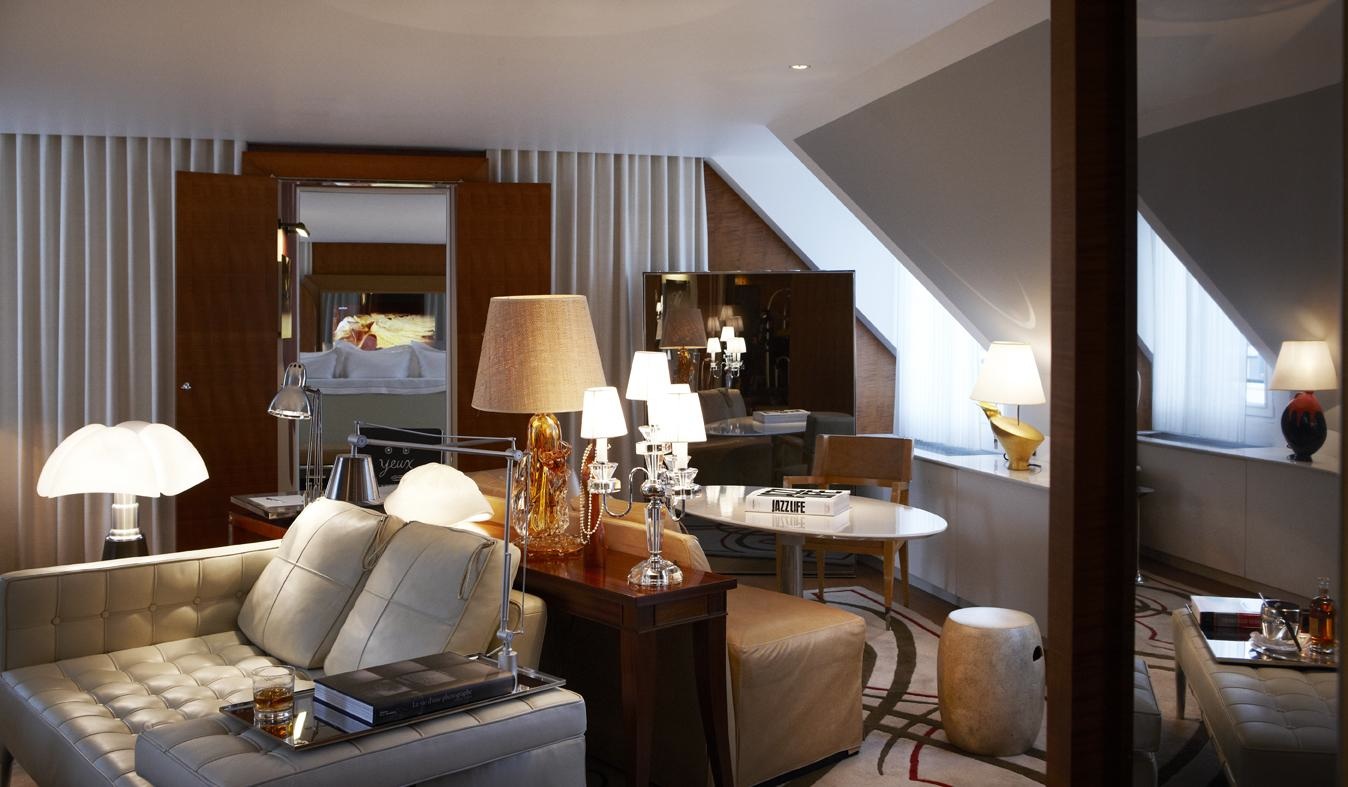
The
night I visited, arriving around 8 PM, the dining
room was not busy, but by 9:30 just about every
table was occupied and the joie de vivre was
palpable. Paris has a few good Japanese
restaurants, and sushi finds its way onto many
French restaurant menus, but the city has nothing
quite like Nobu.
Our table of three left the
menu up to the chef, with wines chosen by the
sommelier. The sashimi included Ōtoro
and chūtoro tuna with salad; and Chilean
seabass with jalapeño, one of Nobu's
signature items. Salmon was lightly
seared, doused with a karashi su miso dressing, and
rock shrimp was done in a crisp tempura style.
There were marvelous sushi rolls and a shrimp
tempura cut roll. For dessert we enjoyed a
chocolate bento box and whiskey cappuccino.
La Cuisine's regular winelist
has been appended with a wide selection of
sake imported specially from the Hokusetsu
House brewery on the northern Japanese Isle of
Sado, along with a menu of Asian inspired
cocktails.
I have written of the
excellence of La Cuisine in the past, and would
miss it if Nobu became a permanent fixture
here. But Nobu seems to fit like a velvet
glove in this space, and it wouldn't be the
worst thing in the world for Paris to acquire a
branch of this global brand.
HAUTE CUISINE
WHOSE PRICES ARE NOT
Senderens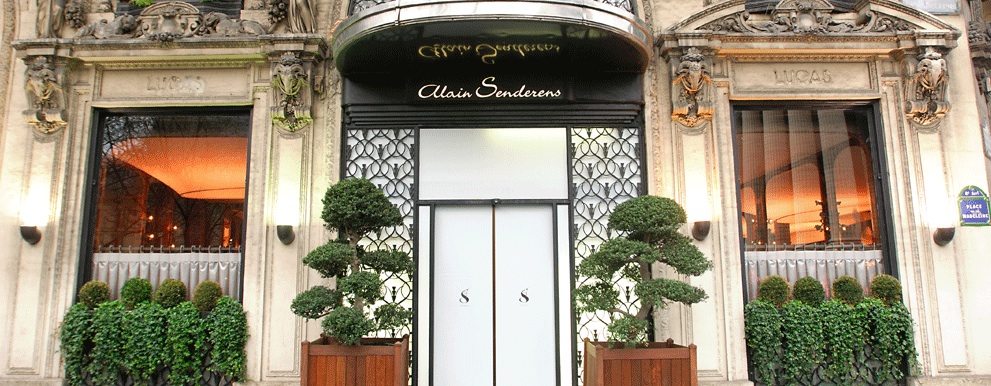
9 Place de la Madeleine
+33 01 42 65 22 90
A few years ago the great
Parisian master chef Alain Senderens handed back
his three stars to Michelin (though the Guide refused
to accept them) and brought his cooking and prices
back down to earth in an an effort to stave off
the stultification of haute cuisine and to make
his own more available to a younger clientele.
Now, right across from the Place Madeleine at
Alain Senderens,
in a casual dining room with undraped
tables that look plucked from the Jetsons’
kitchen, save for some historic wood panels and
mirrors left from the original design, Senderens (left) and
Chef de cuisine Jerome Banctel are doing fabulous
cooking.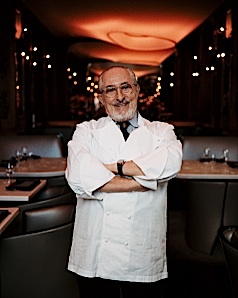 This was once
called Lucas Carton, a stolid classic haute
cuisine restaurant opened in 1925 (originally a
tavern dating to 1732)and later taken over and
renovated and run since 1984 by Senderens, listed
as an historic monument three years later.. The
prices are now half what they used to be, but the
quality has not wavered. Service is also far more
friendly and less formal.
This was once
called Lucas Carton, a stolid classic haute
cuisine restaurant opened in 1925 (originally a
tavern dating to 1732)and later taken over and
renovated and run since 1984 by Senderens, listed
as an historic monument three years later.. The
prices are now half what they used to be, but the
quality has not wavered. Service is also far more
friendly and less formal.
This being autumn, it was nice to begin our
meal with foie gras of silky texture came with
fava beans and wonderful bread, and I had to order
a new turn on one of Senderens' signature
dishes--one I had back in the 1980s when he had a
restaurant in NYC: then, it was made with lobster
but now as open ravioli flavored with vanilla,
served with spinach. That addition of
vanilla 30 years ago was one of the signal moments
for la nouvelle cuisine, and the flavor, if now
not unusual, was a delectable as ever.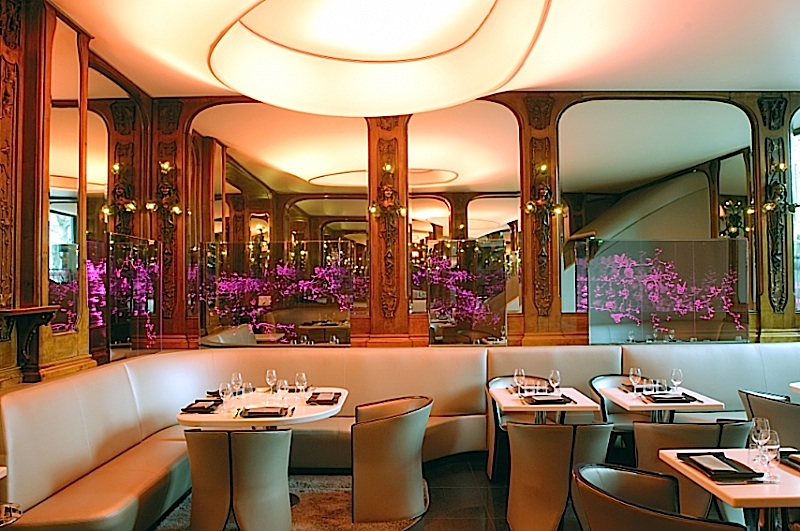
A more classic side was shown impeccably with a rabbit à la royale to his own signature dish, its reduction a textbook lesson in how to intensify flavors, as was pigeon with corn and a puree of peas. Scallops were creamy and good, with glazed turnips and the crunch of hazelnuts.
The desserts included a mousseline of pumpkin with vanilla jelly and bourbon ice cream, lemon zest and "chips" of pumpkin, as well as "pom. . . pom. . .pom," a dessert of apple confit, cooked very slowly, and roasted in wine.
When this was Lucas Carton, a meal back n 2004
could easily reach 200 euros per person, but
Senderens wanted a broader, younger clientele,
which he has most certainly gotten here, and now,
ordering à la carte, you might have a
sumptuous meal for about 90 euros. The loss
in formality is now a gain in modern charm.
FOR A
LATE LUNCH
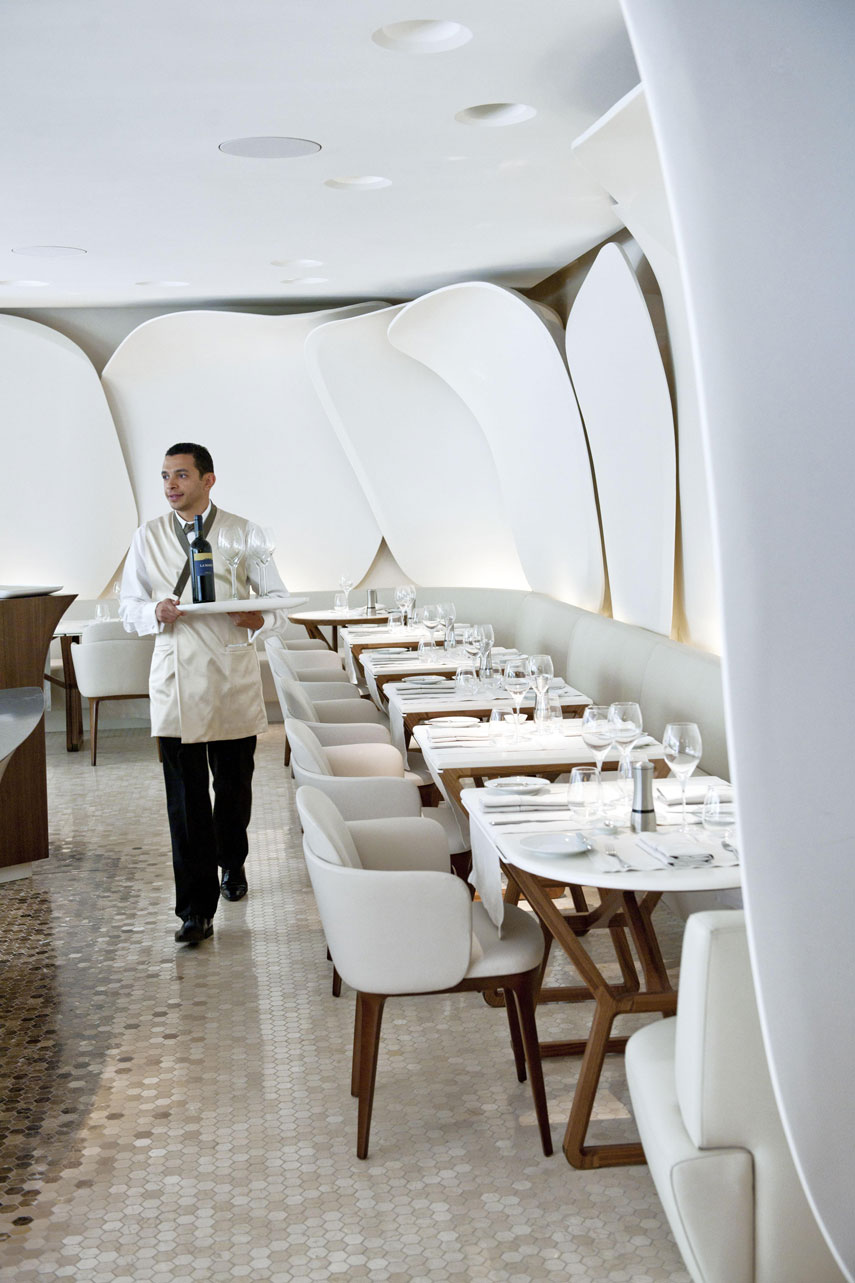 Camélia
Camélia
Mandarin-Oriental Hotel
251 Rue Faubourg-Saint-Honoré
+33 (0)1 70 98 78 88
mandarinoriental.com
If
you’ve just gotten out of the Louvre or coming
from too much shopping on the Rue Faubourg and
missed lunch, you can still dine well after 2 PM
at Camélia in the Mandarin-Oriental Hotel,
located on
Rue Faubourg, open from 7 AM through 11 AM. Eat
light, maybe a pâté in
crust with herb salad (28 euros) or crab ravioli
with infused yuzu
(31 euros). There are also heftier items like
Barbary duck with orange-glazed turnips and
cabbage and lamb with dried fruits and a butternut
squash cream.
The pretty well-lighted
room has a fast-paced staff, 20 wines by the
glass. The hotel's haute cuisine restaurant
is Chef Thierry Marx's very popular, ultra-modern
Sur Mésur,
where a 5-course lunch is a very reasonable 75
euros, at dinner, 6 courses run 165
euros. I have not dined there yet, but
I'll keep you posted if I do.
ACROSS THE SEINE
Le Quinzième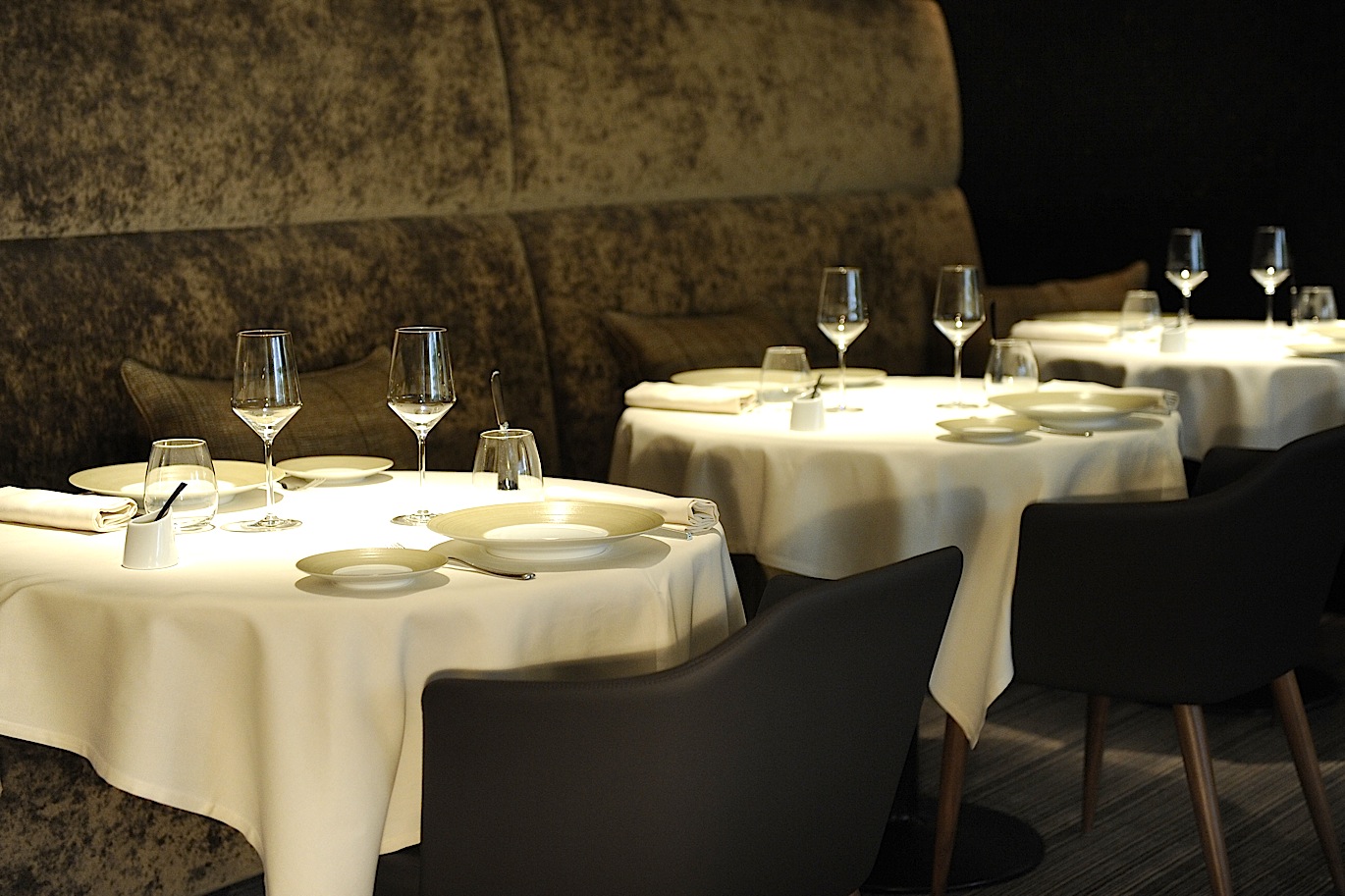
145 Rue Cauchy
+33 01 45 54 4343
www.restaurantlequinzieme
The
15th arrondissement on the Left Bank is
becoming increasingly attractive to gastronomes,
driven by the appropriately named Le
Quinzième (“fifteen”) run by the movie
star-handsome Cyril Lignac (below), who
in fact has one of the city’s most popular TV
cooking shows.
With its open kitchen and forest colors,
it’s a very romantic spot in the evening but draws
a full crowd at lunch, when the sumptuous
three-course lunch at 49 euros is one of the
city’s great bargains.
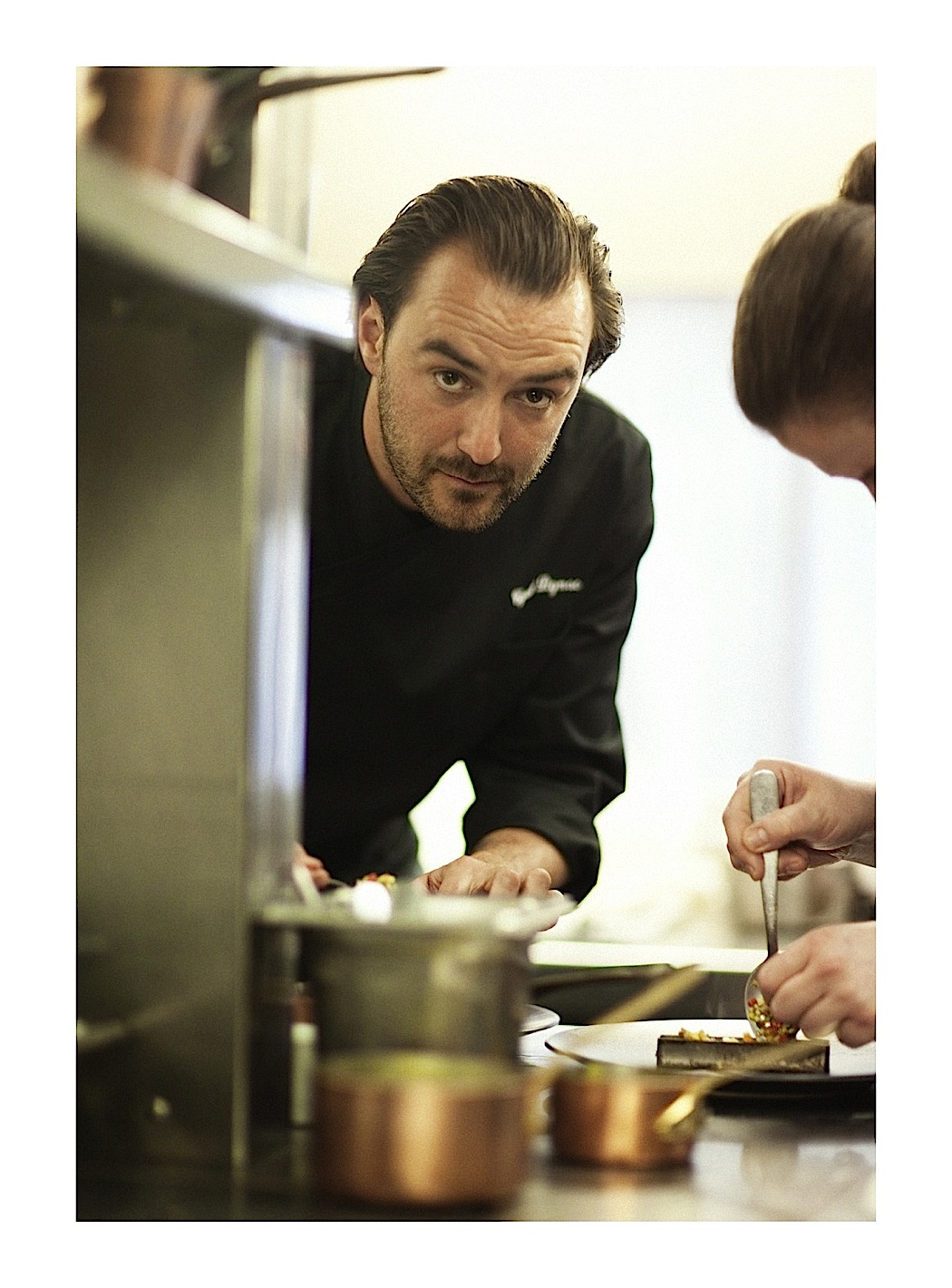 Somewhat sequestered on
a quiet street, the restaurant's doors open to a
civilized ambiance and warm greeting. To the
left is an open kitchen, to the right the dining
room, whose every table was taken at lunch when I
dined there from the "Discovery Menu," bright with
new ideas simply realized for maximum flavor
without much frou-frou. Two of us were able
to sample everything on the menu, beginning with
sheer scallop carpaccio (right) dressed with Ligurian
rich olive oil, yuzu
lemon
Somewhat sequestered on
a quiet street, the restaurant's doors open to a
civilized ambiance and warm greeting. To the
left is an open kitchen, to the right the dining
room, whose every table was taken at lunch when I
dined there from the "Discovery Menu," bright with
new ideas simply realized for maximum flavor
without much frou-frou. Two of us were able
to sample everything on the menu, beginning with
sheer scallop carpaccio (right) dressed with Ligurian
rich olive oil, yuzu
lemon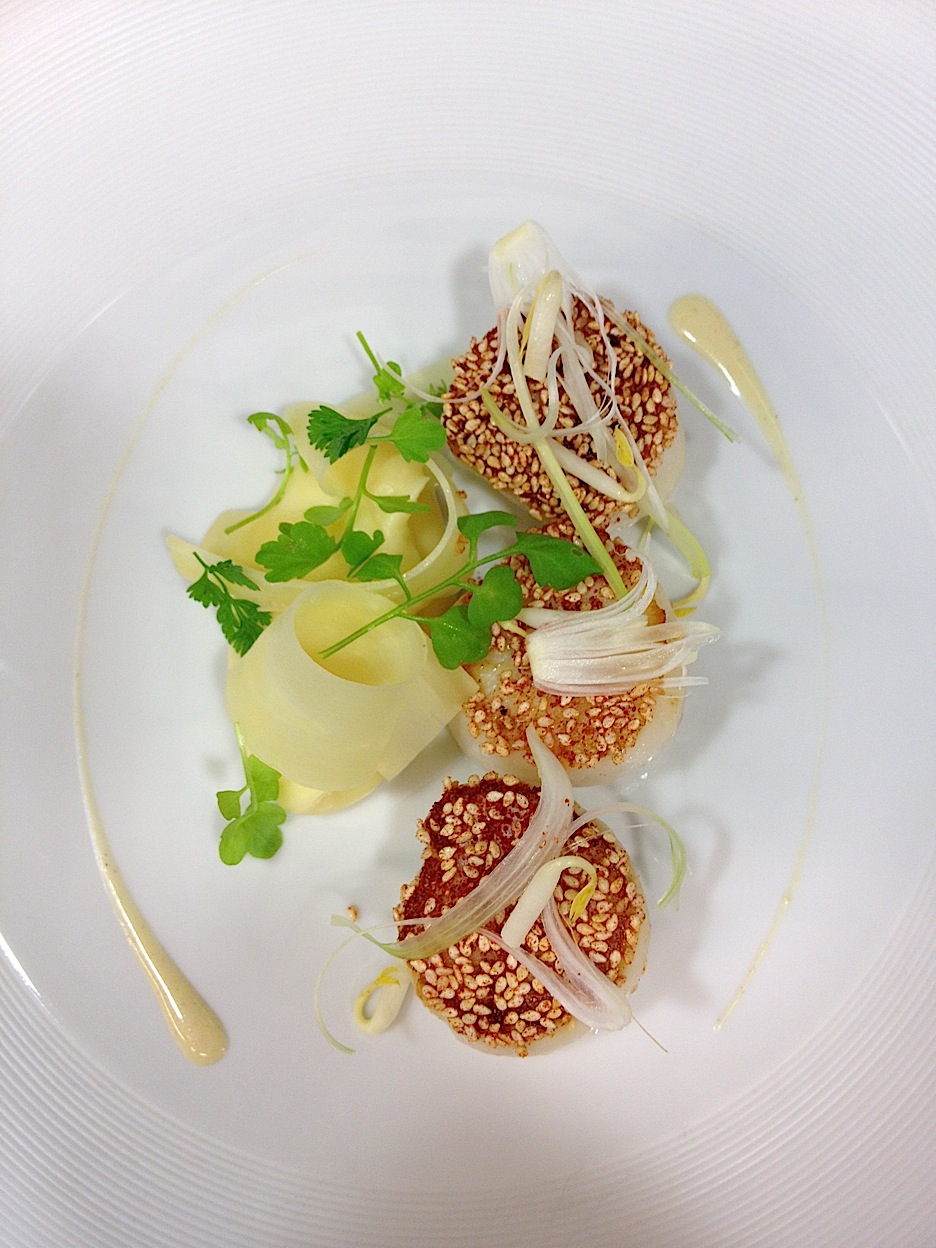 and a
dash of lime cream, and a very beautiful
presentation of fresh goat's cheese from Maine and
Loire,with ravioli packed into white beets and
smoked goat's cheese, and sweet marjoram. (Ravioli
rule in
Paris these days!)
and a
dash of lime cream, and a very beautiful
presentation of fresh goat's cheese from Maine and
Loire,with ravioli packed into white beets and
smoked goat's cheese, and sweet marjoram. (Ravioli
rule in
Paris these days!)
The main courses were codfish
slowly baked in citrus dotted with lemon caviar
and served with a silver pot of cauliflower puree
scented with Madras curry cream--a little triumph
of excellence. Roasted loin of veal was
cooked with salted butter, marinated anchovies,
Jerusalem artichoke puree and preserved lemons, a
dish redolent of the Mediterranean. The meat was
cut in very thin strips and the anchovy in no way
overpowered the flavors, lying underneath them
with a saline edge.
Desserts
were superb: Araguani chocolate soufflé
with caramelized hazelnuts and salted butter
caramel, and preserved lemon and cream with
shortbread and bourbon-flavored ice cream.
This is cuisine with a light, modern touch
of a kind that makes such a lunch less an
extravagance than it might be across the
Seine. The whole enterprise has the sense
of being chic but unpretentious, stylish without
being fleetingly fashionable. Lignac will
be around for a long, long time and
Quinzième hints at what may come in the
future.
❖❖❖
NEW YORK CORNER
by John Mariani
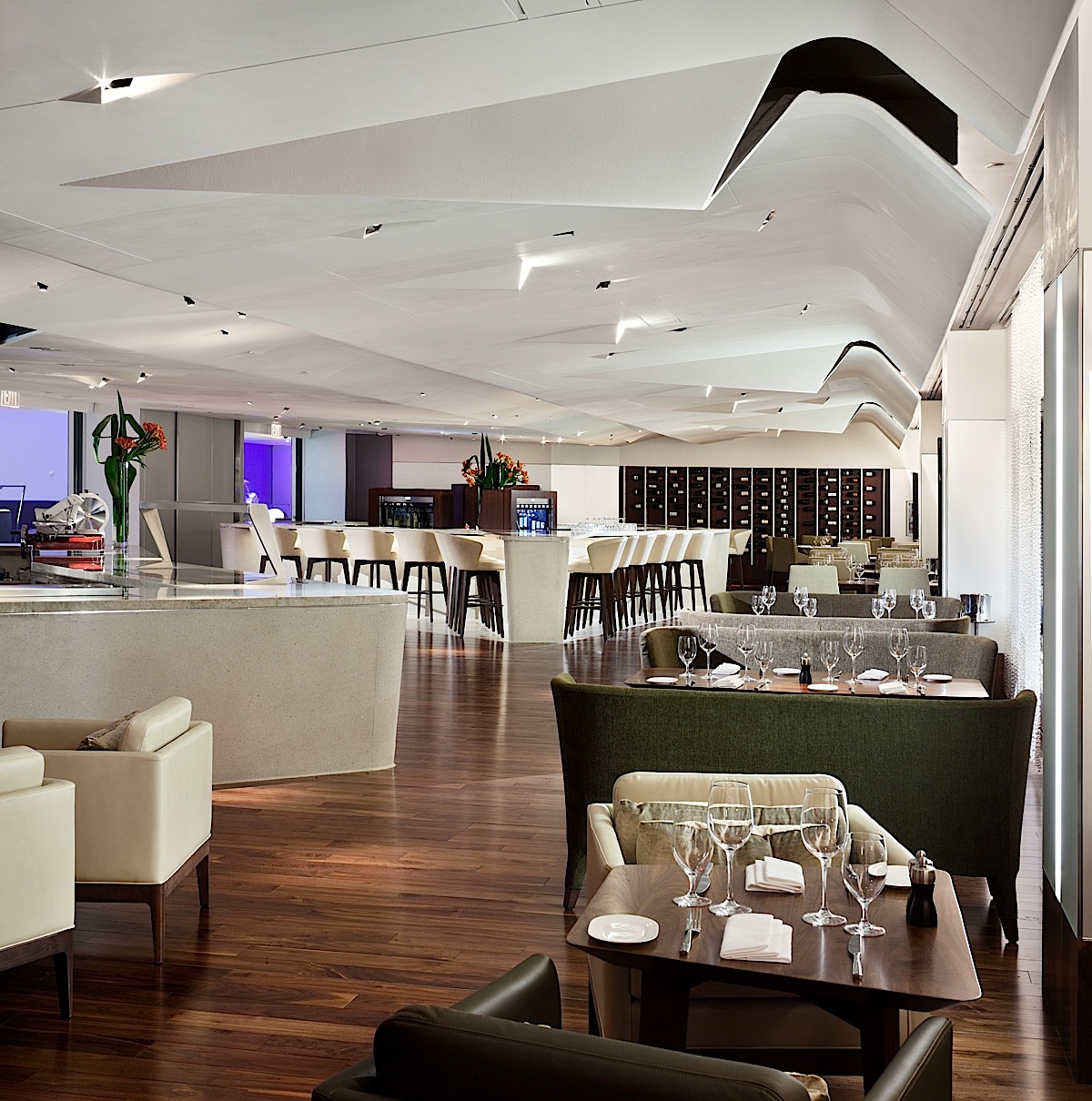 ATRIO
Wine Bar Restaurant
ATRIO
Wine Bar Restaurant
Conrad Hotel
102 North End Avenue
212-945-0100
The
463-suite Conrad Hotel, with the Waldorf-Astoria,
Hilton Hotels' entry into the high-end market in
NYC, is a reconceiving of what had been an Embassy
Suites, keeping, for reasons breathtakingly
obvious upon riding the escalator up to it, the
grand soaring atrium that makes me
wonder about the true price of post-9/11 real
estate downtown. The size and airiness of
the atrium, with 2000 pieces of artwork in the
public spaces, puts me in mind of a modern hotel
in Brazil or Barcelona. The dominant work is
Sol Le Witt's "loopy Doopy," at 10 by 80 feet
taking up most of the wall in the atrium.
The hotel is way downtown in
the Financial District, which has seen an
astonishing amount of development, including
condos, that make it fertile territory for a hotel
and restaurant, especially when the World Trade
Center buildings are finished. Earlier this year
Danny Meyer's USC Hospitality Group put in the
free-standing North End Grill, Shake Shack,
and Blue Smoke, adjacent to the Conrad,
undoubtedly with more to come.
The restaurant here, at the top
of that space age escalator, is called Atrio Wine
Bar Restaurant, a name that candidly 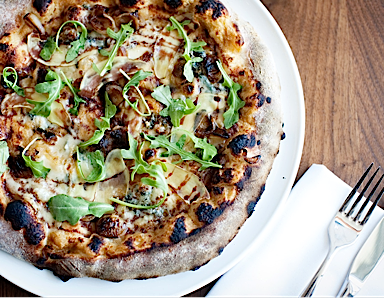 emphasizes
its purpose, which is to satisfy all-day dining
options for people staying here, taking a business
meeting here, or rendezvous-ing after work.
Indeed, when I arrived at 7 PM, the atrium outside
and the bar inside were thronged with men in
shirtsleeves and their female counterparts nursing
beers and cocktails, continuing after we left at
9:30. It's a handsome, casual place fitted
out to lounge in, with deep sofas and banquettes,
beaded curtains, and lighting just at the right
level to see who's coming and going.
emphasizes
its purpose, which is to satisfy all-day dining
options for people staying here, taking a business
meeting here, or rendezvous-ing after work.
Indeed, when I arrived at 7 PM, the atrium outside
and the bar inside were thronged with men in
shirtsleeves and their female counterparts nursing
beers and cocktails, continuing after we left at
9:30. It's a handsome, casual place fitted
out to lounge in, with deep sofas and banquettes,
beaded curtains, and lighting just at the right
level to see who's coming and going.
Chef Anthony
Zamorra, who works out of a great-looking, very
open kitchen, is touching all bases, with small
plates, stone-fired pizzas, and a good dose of
Italian dishes, and he and his staff are putting
in the time to make it all consistently
good. It's a very contemporary menu, with a
little for everyone, starting with crudo seafood
and a quartet of warm-from-the-grill crostini,
including a delightful one with ricotta,
truffle honey and sea salt (right), and
another of roasted tomatoes, hot soppressata,
and basil.
The pizza we tried was very
good, and that stone oven shows its stuff in the
bubbles and char that the crust acquires. On top,
caramelized onions, potato, Mountain Gorgonzola,
and a Port reduction made for a sweet and savory
combo of flavors. It would make a great
lunch, too.
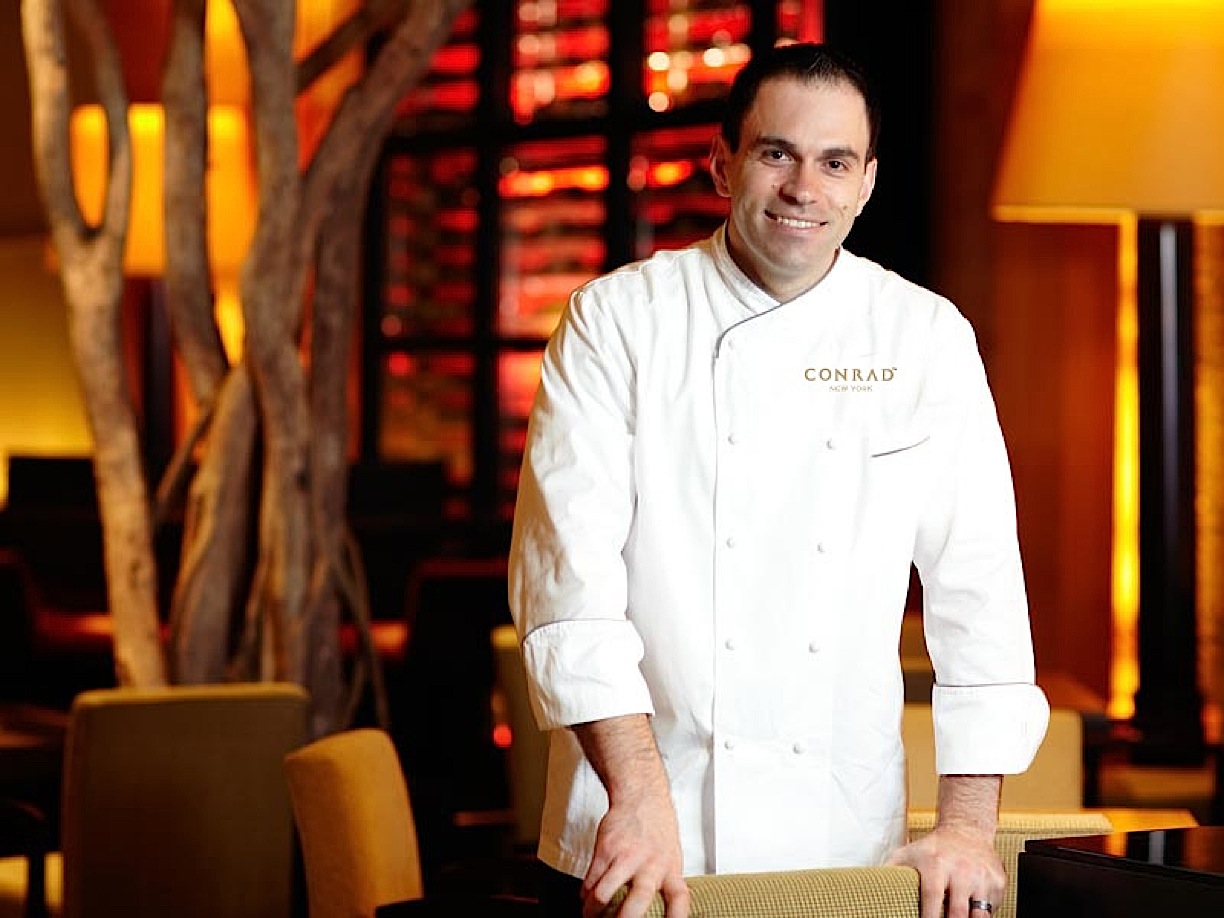 Zamora
(left)
sent out hand-rolled garganelli pasta with an osso
buco ragout, but the addition of strong-tasting
Gaeta olives upset the balance. Chatham cod
with Maila clams, toasted fregola and
chorizo was a fine New England autumn seafood
dish, and the Moroccan-style braised short ribs
had the scent of lemon, with hearty chick peas and
minted yogurt--a really terrific dish.
Zamora
(left)
sent out hand-rolled garganelli pasta with an osso
buco ragout, but the addition of strong-tasting
Gaeta olives upset the balance. Chatham cod
with Maila clams, toasted fregola and
chorizo was a fine New England autumn seafood
dish, and the Moroccan-style braised short ribs
had the scent of lemon, with hearty chick peas and
minted yogurt--a really terrific dish.
To end off the meal there is a
juicy ricotta cheesecake with Meyer lemon curd and
blueberry compote I highly recommend.
Amarena cherries did nothing but overpower the
subtly of chocolate panna cotta.
Atrio, being a wine bar, has
plenty of decently priced options, and they do
know how to make a cocktail well and generously.
On my visit, I found the
waitstaff either overworked or inattentive, with
stretches when there were no personnel within
sight. This, I'm sure, can be remedied, but it may
suggest that the sit-down dining part of Atrio
needs more attention than the tables with drinks.
So, if you are in that area and
need an escape from the office or a good spot for
dinner, Atrio is hitting its stride with real
panache.
Atrio is open
for all day dining. Appetizers run $4-$16, main
courses $19-$32. Parking in the area is
outrageously expensive, but the Conrad provide
complementary parking for restaurant guests.
❖❖❖
THERE'S
DANCING IN THE VINEYARDS AT CHÂTEAU ANGELUS!
Welcome to the "A" Team
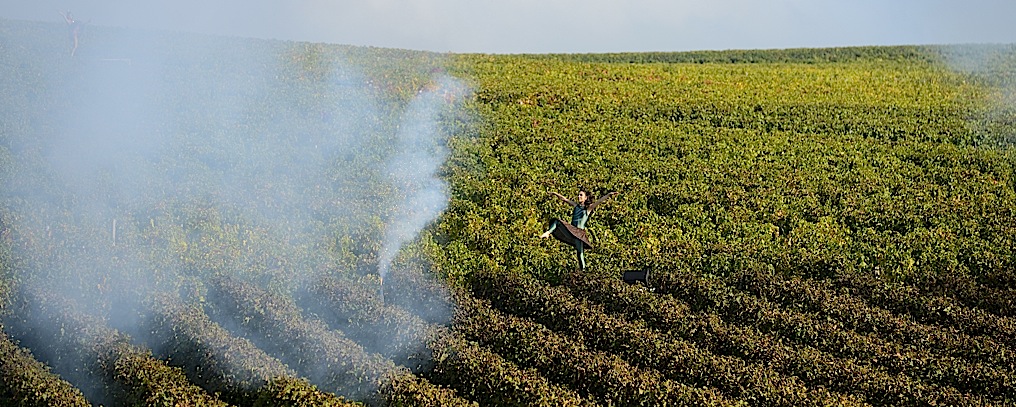
by Mark Golodetz
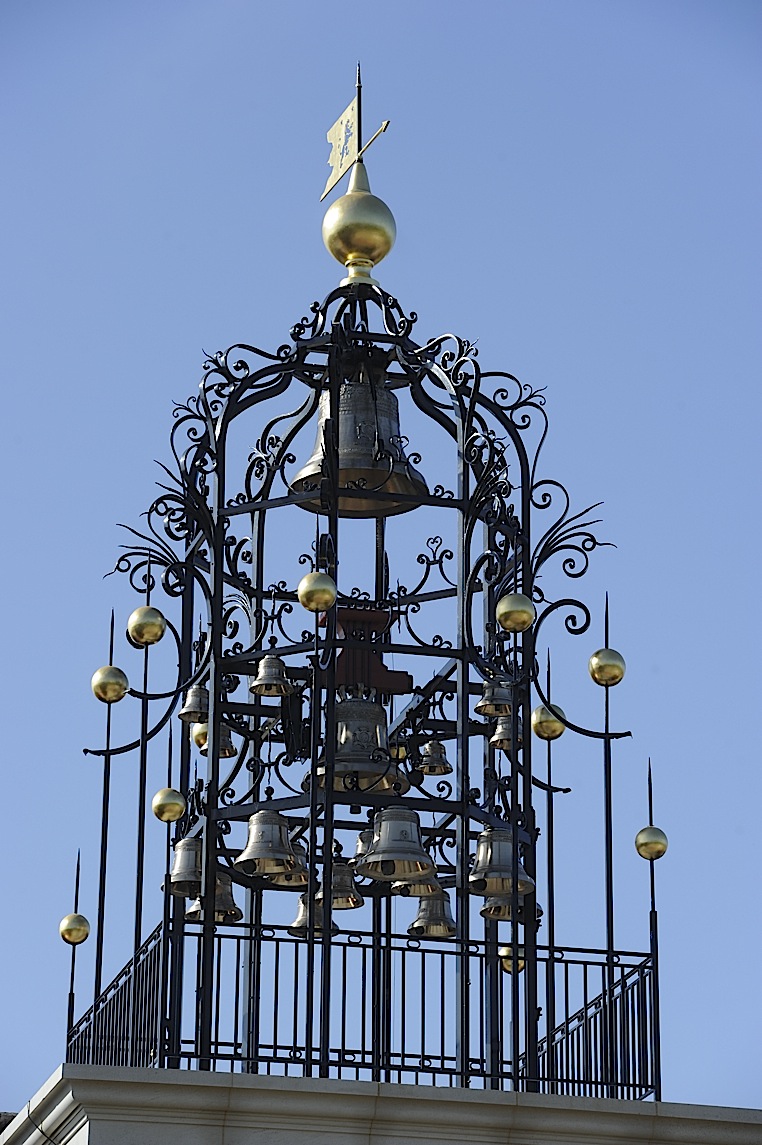 The French
love their classifications. I have always felt that
it's their way of keeping the universe in order, and
it remains one of their more endearing traits. As far
as wine is concerned, the Granddaddy and the most
famous of all classifications was done in Bordeaux in
1855 when the merchants sat down and put one together
for the Médoc, mostly based on the prices the
wines were fetching in the marketplace. Although not the first, it was the one
that stuck. In the more than one hundred and fifty
years since it was done, there have been only two
changes, Cantermerle was added in 1856 and
Château Mouton Rothschild was elevated to first
growth in 1973.
The French
love their classifications. I have always felt that
it's their way of keeping the universe in order, and
it remains one of their more endearing traits. As far
as wine is concerned, the Granddaddy and the most
famous of all classifications was done in Bordeaux in
1855 when the merchants sat down and put one together
for the Médoc, mostly based on the prices the
wines were fetching in the marketplace. Although not the first, it was the one
that stuck. In the more than one hundred and fifty
years since it was done, there have been only two
changes, Cantermerle was added in 1856 and
Château Mouton Rothschild was elevated to first
growth in 1973.
Things are a little more
fluid in St. Émilion, an appellation based
around the beautiful medieval town on the right bank
of the Gironde River. Its classification began in 1955
and changes every ten years, when châteaux may
be promoted or demoted. While it would be hard
for even the most ardent American wine lover to
distinguish differences between a Grand Cru Class and
a Grand Cru, it is extremely important to the locals.
There are financial implications as well as social
ones: the price of vineyards, the status within the
community, and recent performance are all measured by
the classification. Demotion is a disaster for the
estates involved and has led, inevitably, to
litigation. Such was the case in 2006, when a number
of châteaux sued, and after a prolonged 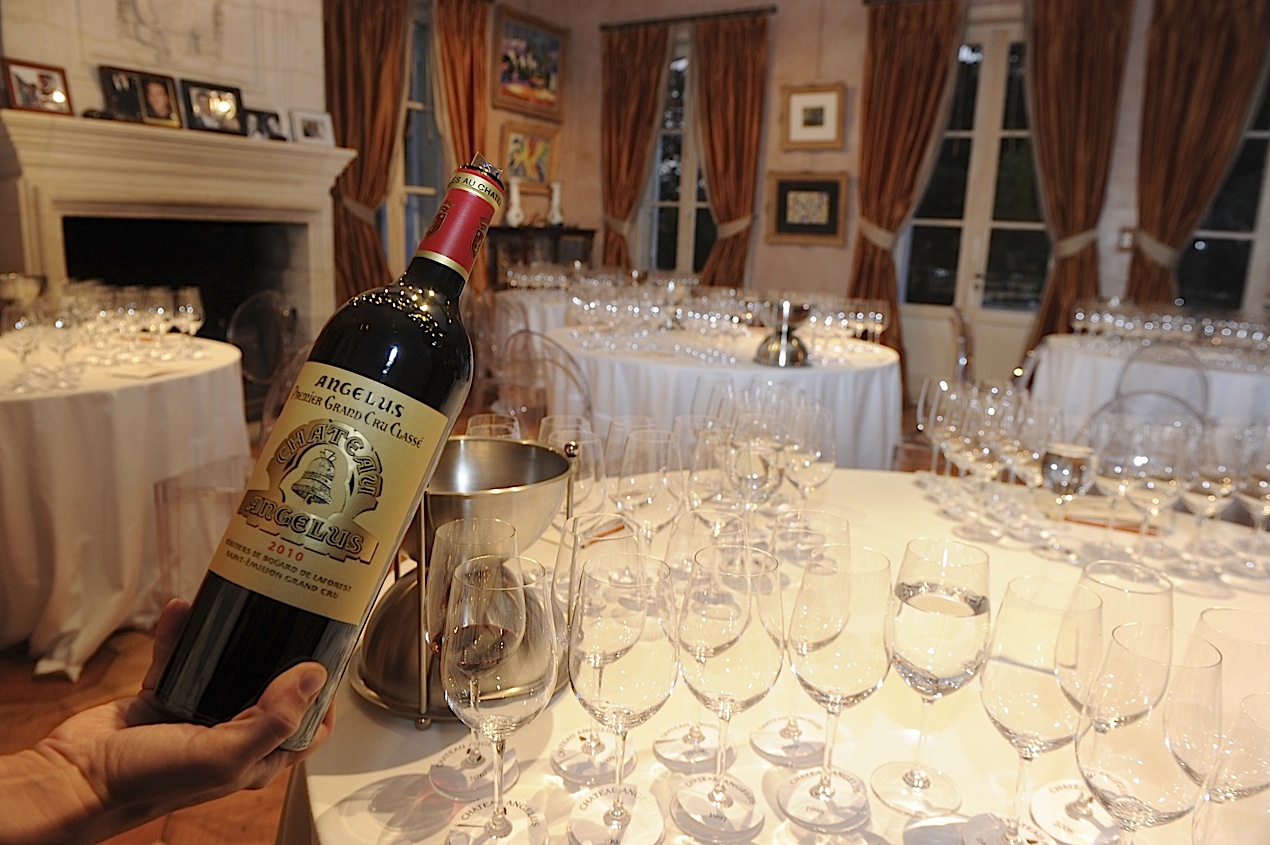 legal battle, the decision was taken to
revoke the outcome, and redo it in 2012. After all the
legal bloodshed, there were many who thought the
authorities would play it safe in 2012, but that was
not the case. There were one or two demotions, but
most people focussed on the estates that got promoted,
most notably Angelus and Pavie, moved up to Premier
Grand Cru Classé A, the very highest level in
the classification. Both châteaux are now
bracketed with the two other Grand Cru As, Ausone and
Cheval Blanc, the first changes at this level since
1955.
legal battle, the decision was taken to
revoke the outcome, and redo it in 2012. After all the
legal bloodshed, there were many who thought the
authorities would play it safe in 2012, but that was
not the case. There were one or two demotions, but
most people focussed on the estates that got promoted,
most notably Angelus and Pavie, moved up to Premier
Grand Cru Classé A, the very highest level in
the classification. Both châteaux are now
bracketed with the two other Grand Cru As, Ausone and
Cheval Blanc, the first changes at this level since
1955.
Not surprisingly, the owners
are ecstatic, but their elevation is in itself not
altogether surprising. Angelus has been making
extremely good wines for many years, and recently,
they have begun a fairly serious program to rebuild
the cellars, which should be ready in time for the
2013 harvest. The first thing to be finished were the
new estate bells, and I arrived in Bordeaux last month
to watch them be inaugurated by 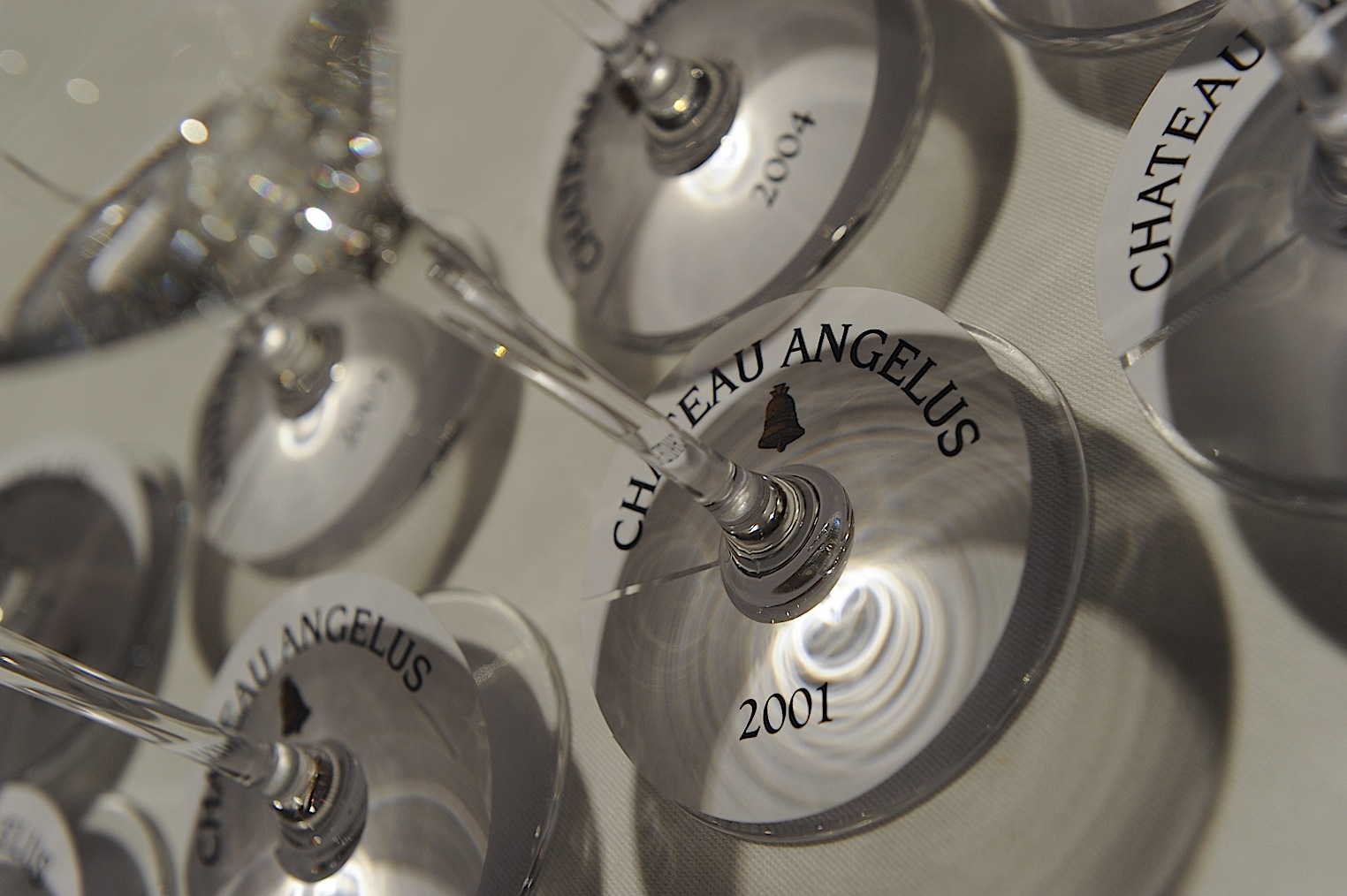 the Archbishop of Bordeaux.
As one would expect from a château on the
cutting edge, the bells are also modern, controlled by
computer, and able to launch into everything from the
"Star Spangled Banner" to the "Angelus" itself.
the Archbishop of Bordeaux.
As one would expect from a château on the
cutting edge, the bells are also modern, controlled by
computer, and able to launch into everything from the
"Star Spangled Banner" to the "Angelus" itself.
Angelus
has a reputation for making wines that are more modern
in style, yet a tasting the night before the
celebration showed how brilliantly the wines are able
to reflect their terroir. We tasted the last fifteen
vintages in bottle, a good way to gauge the quality
and consistency of any wine. As
one would expect, the best vintages were brilliant:
2010 just edging its younger sister the '09, the 2005
extremely promising, and the 2000 arguably the best
wine there, although the 1998 was probably better to
drink now. Lesser vintages also showed well; the 2004,
2006, and 2008 were all superb and very classic. Even
difficult vintages such as 2003 and 1997 were
showing beautifully. With the exception of 1995 (a
poor bottle; I have had much better versions of it),
all the wines were impressive. There's little doubt
that Angelus can justify its new place of the top of
the St. Émilion hierarchy by the only thing
they should be judged, the wines they are
making.
❖❖❖
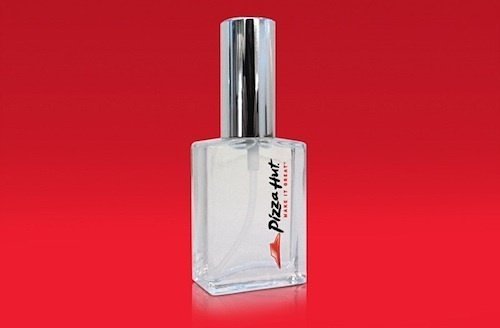
NOW GARLIC BREATH WILL BE THE LEAST OF
YOUR WORRIES!
Pizza Hut Canada has released a
limited edition Pizza Hut perfume that smells like "a
box of Pizza Hut pizza being opened," called "Eau de
Pizza Hut." But all 110 bottles of Eau de Pizza
Hut have already been distributed to random fans via
Facebook.
BAH,
HUMBUG!!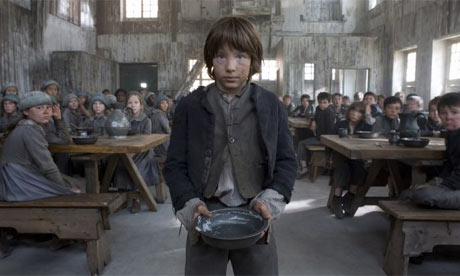
A cafeteria worker named Dianne Brame was fired for
feeding a fourth-grade boy whose mother hadn't
renewed him in the school's free
lunch program
at Hudson Elementary in Webster Groves, which
said the child was entitled only to be served
carton of milk and cheese sandwich. Brame says she
served the fourth-grader a free full lunch for two
months in order to prevent the other students from
bullying him.
❖❖❖
Any of John Mariani's
books below may be ordered from amazon.com.
 |
My latest book, which just won the prize for best book from International Gourmand, written with Jim Heimann and Steven Heller, Menu Design in America, 1850-1985 (Taschen Books), has just appeared, with nearly 1,000 beautiful, historic, hilarious, sometimes shocking menus dating back to before the Civil War and going through the Gilded Age, the Jazz Age, the Depression, the nightclub era of the 1930s and 1940s, the Space Age era, and the age when menus were a form of advertising in innovative explosions of color and modern design. The book is a chronicle of changing tastes and mores and says as much about America as about its food and drink.
“Luxuriating vicariously in the pleasures of this book. . . you can’t help but become hungry. . .for the food of course, but also for something more: the bygone days of our country’s splendidly rich and complex past. Epicureans of both good food and artful design will do well to make it their coffee table’s main course.”—Chip Kidd, Wall Street Journal.
“[The menus] reflect the amazing craftsmanship that many restaurants applied to their bills of fare, and suggest that today’s restaurateurs could learn a lot from their predecessors.”—Rebecca Marx, The Village Voice. |
"Eating Italian will never be the same after reading John Mariani's entertaining and savory gastronomical history of the cuisine of Italy and how it won over appetites worldwide. . . . This book is such a tasteful narrative that it will literally make you hungry for Italian food and arouse your appetite for gastronomical history."--Don Oldenburg, USA Today. "Italian
restaurants--some good, some glitzy--far
outnumber their French rivals. Many of
these establishments are zestfully described
in How Italian Food Conquered the World, an
entertaining and fact-filled chronicle by
food-and-wine correspondent John F.
Mariani."--Aram Bakshian Jr., Wall Street
Journal.
"Equal parts
history, sociology, gastronomy, and just
plain fun, How Italian Food Conquered the
World tells the captivating and delicious
story of the (let's face it) everybody's
favorite cuisine with clarity, verve and
more than one surprise."--Colman Andrews,
editorial director of The Daily
Meal.com. "A fantastic and fascinating
read, covering everything from the influence
of Venice's spice trade to the impact of
Italian immigrants in America and the
evolution of alta cucina. This book will
serve as a terrific resource to anyone
interested in the real story of Italian
food."--Mary Ann Esposito, host of PBS-TV's
Ciao
Italia. "John Mariani has written the
definitive history of how Italians won their
way into our hearts, minds, and
stomachs. It's a story of pleasure over
pomp and taste over technique."--Danny Meyer,
owner of NYC restaurants Union Square Cafe,
Gotham Bar & Grill, The Modern, and
Maialino.
|
 |
 |
 |
 |
 |
 |
 |
 |
❖❖❖
 Everett Potter's Travel Report:
Everett Potter's Travel Report:

 Eating Las Vegas
is the new on-line site for Virtual Gourmet
contributor John A. Curtas., who since 1995
has been commenting on the Las Vegas food
scene and reviewing restaurants for Nevada
Public Radio. He is also the
restaurant critic for KLAS TV, Channel 8 in
Las Vegas, and his past reviews can be
accessed at KNPR.org.
Click on the logo below to go directly to
his site.
Eating Las Vegas
is the new on-line site for Virtual Gourmet
contributor John A. Curtas., who since 1995
has been commenting on the Las Vegas food
scene and reviewing restaurants for Nevada
Public Radio. He is also the
restaurant critic for KLAS TV, Channel 8 in
Las Vegas, and his past reviews can be
accessed at KNPR.org.
Click on the logo below to go directly to
his site.
www.EatingLV.com

Tennis Resorts Online: A Critical Guide to the World's Best Tennis Resorts and Tennis Camps, published by ROGER COX, who has spent more than two decades writing about tennis travel, including a 17-year stretch for Tennis magazine. He has also written for Arthur Frommer's Budget Travel, New York Magazine, Travel & Leisure, Esquire, Money, USTA Magazine, Men's Journal, and The Robb Report. He has authored two books-The World's Best Tennis Vacations (Stephen Greene Press/Viking Penguin, 1990) and The Best Places to Stay in the Rockies (Houghton Mifflin, 1992 & 1994), and the Melbourne (Australia) chapter to the Wall Street Journal Business Guide to Cities of the Pacific Rim (Fodor's Travel Guides, 1991).


MARIANI'S VIRTUAL GOURMET
NEWSLETTER is published weekly. Editor/Publisher: John
Mariani.
Contributing Writers: Christopher Mariani, Robert Mariani,
John A. Curtas, Edward Brivio, Mort Hochstein,
Suzanne Wright, and Brian Freedman. Contributing
Photographers: Galina Stepanoff-Dargery,
Bobby Pirillo. Technical Advisor: Gerry McLoughlin.
© copyright John Mariani 2012
